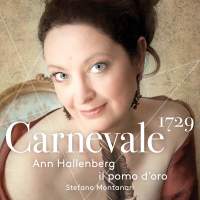Texte paru dans: / Appeared in: |
|
|
Outil de traduction (Très approximatif) |
|
|
Reviewer:
David Vickers
At least some of these productions at different theatres caught the eye (and ear) of Handel, based in La Serenissima while hunting around Italy for new singers. His erstwhile diva Faustina and castrato Senesino played the principal parts in Orlandini’s Adelaide, and arias from each role might as well have been tailor-made for Hallenberg’s pinpoint virtuosity and lyricism, communicative use of language, idiomatic embellishment, intelligently sculpted phrasing (limpid, gentle or turbulent as the music demands) and astute theatrical characterisation: time seems to stand still in Adelaide’s lament ‘Quanto bello agl’occhi miei’, sung sublimely over a sophisticated rolling string accompaniment, and the voice’s dialogue with violinistdirector Stefano Montanari is shaded elegantly in Ottone’s lyrical alla francese aria ‘Vedrò più liete e belle’. Sweetly tender solo oboe and pizzicato strings are judged beautifully in ‘Mi par sentir la bella’ from Giacommeli’s Gianguir, and there is zestiness in two quick arias from Albinoni’s Filandro. From Porpora’s Semiramide riconosciuta there are several fine arias: the gracefully lilting siciliano ‘Il pastor, se torna aprile’, the cantabile intimacy of ‘Bel piacer saria d’un core’ (for Farinelli making his Venetian debut), and the furious ‘In braccio a mille furie’ (the only aria recorded before – notably by Hallenberg herself). Perhaps the eligible 1729 repertoire might have yielded some greater variety of instrumentation and dramatic moods, but such reservations evaporate at the sheer classiness of Hallenberg and Il Pomo d’Oro’s perfectly aligned dulcetness in ‘Ombra cara, ombra adorata’, sung by the grieving widow of Pompey in Leo’s Catone in Utica, and the barnstorming climax of Vinci’s sizzling ‘Nave altera che in mezzo all’onde’, used in the pasticcio L’abbandono di Armida. |
|




